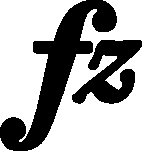



|
b. 302
|
composition: Op. 2, Variations, complete
..
The short category imprint: Differences between sources issues: Long accents , Inaccuracies in GE , Inaccuracies in FE , EE inaccuracies |
||||||||||||
|
b. 302-304
|
composition: Op. 49, Fantaisie in F minor
..
According to us, the short accents in bar 302 and 304 resulted from the inaccuracy of the A notation (→GE), hence in the main text we suggest long accents, as in the preceding phrase. In EE2 the accents were added on the basis of GE1. category imprint: Differences between sources; Editorial revisions issues: Long accents , EE revisions |
||||||||||||
|
b. 302
|
composition: Op. 49, Fantaisie in F minor
..
The missing a category imprint: Differences between sources issues: Errors in FE , FE revisions , Uncertain notes on ledger lines |
||||||||||||
|
b. 302-309
|
composition: Op. 49, Fantaisie in F minor
..
Chopin added the multi-bar cresc. - - indication – along with a number of other indications in this fragment – to A after [FC] had been finished, which explains its absence in FE (→EE1). In the very FE (or earlier in [FC]) there is only the category imprint: Graphic ambiguousness; Differences between sources; Corrections & alterations issues: EE revisions , Corrections in A , GE revisions , Authentic corrections of FE , Inaccuracies in A |
||||||||||||
|
b. 302-303
|
composition: (Op. 4), Sonata in C minor, Mvt IV
..
In the main text, we do not include the inauthentic L.H. fingering added by EE. category imprint: Differences between sources issues: EE revisions |

 after
after  in
in 


 2 in
2 in 


 in b. 309 in
in b. 309 in 

 and
and  in bar 310.
in bar 310. 